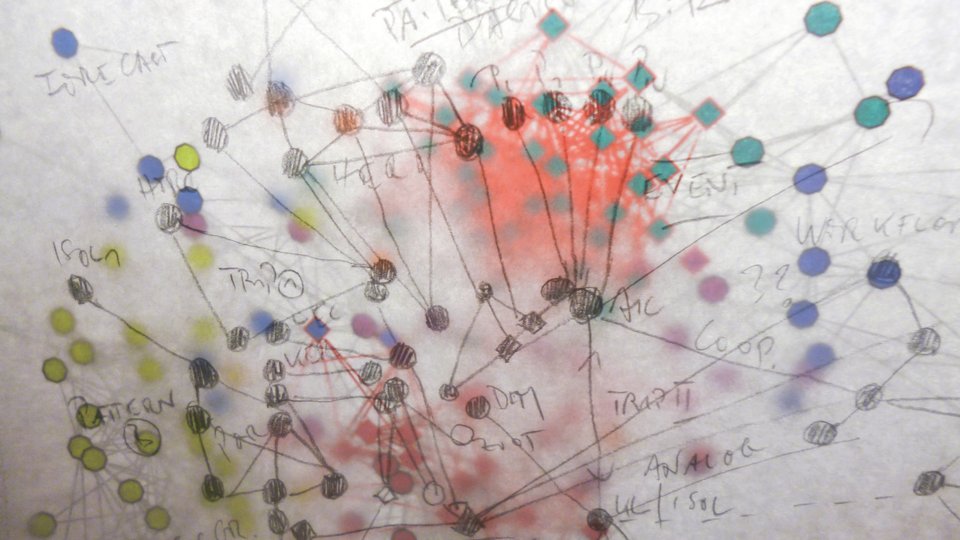Zentralinstitut der Humboldt-Universität zu Berlin

Shaping Knowledge
Research topic
This project will focus on how knowledge is generated, organized, and maintained, with a particular emphasis on hybrid, complex cultural artifacts. From the perspective of information science, we will proceed from an established continuum; it begins with raw, atomized, and per se meaningless data; becomes information (data with identifiable patterns); transforms into knowledge (information in a social or semantic context); then, through the process of creative thinking (or art) and non-deterministic interpretation, finally generates new knowledge and new information.
Seen in this perspective, the critical and most interesting transition is from information to knowledge, a process of contextualization that can be observed both synchronically and diachronically. The synchronic perspective has its origins in projects such as the Europeana cluster and investigates the contextualization of information objects to enable the creation and Gestaltung of knowledge, creative thought, and interpretation. Pertinent answers can be sought in the context of social and interactive net-based information technologies (i.e., »Web 2.0«), as well as in the context of semantic contextualization in the »semantic Web« (i.e., »linked open data«). The diachronic perspective originates from the long-term archiving of digital content in projects such as KOPAL and LUKII.
Today, digital content does not inhabit a simple bitstream, but exists within a technical context consisting of complex interactions between one or more data streams and applications. The critical question is how much of the context of these information objects must be maintained, together with the bitstream of these objects, so that their potential for the generation of knowledge is accessible over the long term.
Objectives
The goal of the project is to explore the complex relationships between physical information carriers and their digital representations and to examine ways to comprehend digital information objects. In both cases, the perception and maintenance of contextual models clearly extends beyond the simple processing and reception of data streams.
Execution
The context of information objects is both technical and cultural. To understand the cultural dimension, it is useful to have an ethnographic description that makes explicit the originators of data and information, as well as demonstrating the use and interpretation of data. Such contextual connections enable the construction of intellectual relations in the form of »linked data,« which can be used by other researchers in other contexts. This is particularly significant for long-term archiving, as well as for creating an intersubjective minimal consensus on the meaning of information objects and their knowledge-constitutive contexts. Images are key elements within the data collections of many disciplines; this applies equally to art history and to scientific fields such as biology and chemistry. The interpretative models vary significantly and the contextual relationships are relevant in different ways in the individual fields. Also, they demand an explicit and discipline-specific analysis to make them useful when embedded in current and future heuristic instruments.
Both the conceptual approach and the relevant corpus of the project extend substantially beyond the aforementioned project contexts. For example, the long-term archiving of digital artifacts is usually viewed as storage of purely digital objects. However, the history of digital media reveals a plethora of »hybrid objects,« such as audio CDs, computer games,and »shrink-wrap« software, which possess both a digital and a material component and which require correspondingly different strategies for maintenance. The increasing use of RFID tags adds a second digital (virtual) layer to what were originally purely material collections; this new layer of collections or libraries has to be maintained. Such »hybrid objects« reveal new challenges in information management for computer science, library science, and other participants. These challenges will be theoretically investigated and examined in concrete examples.
Securing the results
The result of the project will be the prototype of an executable and permanently accessible system for the modeling and representation of interdisciplinary corpora. »Model« and »context« are considered significant constituents of »knowledge«; in addition to approaches to modeling from information and computer science, contributions such as those by M. Ashby for »materials selection« will play a role in categorizing physical materials as a component of orders of knowledge. The project will be implemented concretely in collaboration with the project Transdisciplinary Indexing of Cultural-Historical Collections, and results will be stored in a data repository on »Structure-Function Relationships« in collaboration with the projects Models in Cognitive Processes, Historical Structures, Self-Moving Materials, and Mobile Objects.
